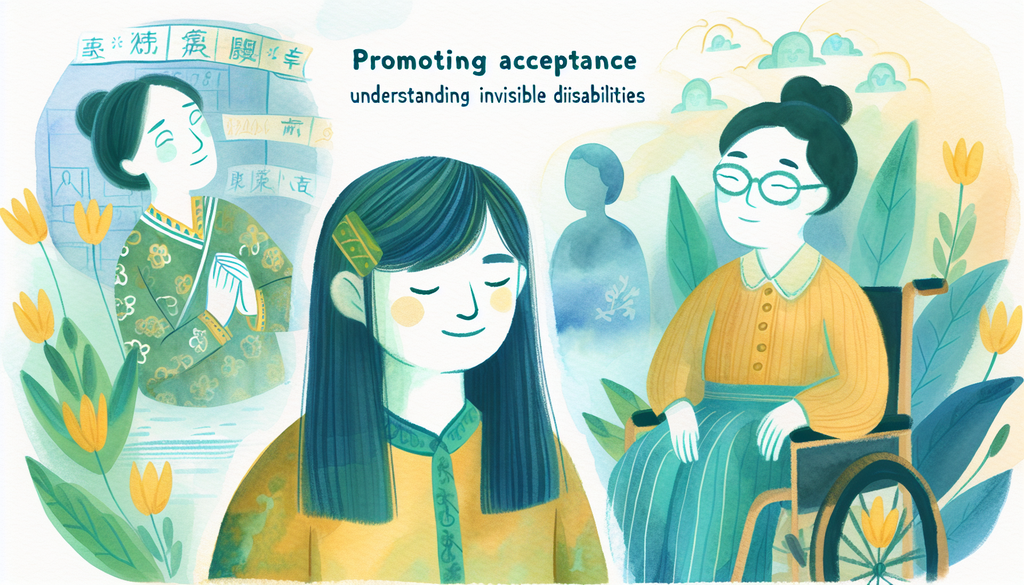Promoting Acceptance: Understanding Invisible Disabilities

Invisible disabilities can go unnoticed in daily interactions as they’re not visible or apparent. Children with invisible disabilities often grapple with challenges in learning and socializing, which can affect their self-esteem and academic progress.
As parents and caregivers, understanding and advocating for these children is significant for their personal growth and academic success. In this post, we’ll delve into ways you can help promote acceptance and inclusivity for children with invisible disabilities.
What Are Invisible Disabilities?
Invisible disabilities include a broad range of conditions that may not be immediately noticeable but can greatly impact a person’s daily life. Conditions such as ADHD, dyslexia, Asperger’s Syndrome and others are not identified by physical signs, making their comprehension a challenge.
Our previous post on Breaking Myths: The Reality of Raising a Gifted Child explores some common misconceptions about gifted children, many of whom may also have invisible disabilities.
Discussing invisible disabilities helps increase awareness and understanding, diminishing the stigmas attached to these conditions while promoting inclusivity in both schools and communities.
Spotting the Signs: How to Recognize Invisible Disabilities
Recognizing invisible disabilities can be challenging. As every child is unique, often, the signs of invisible disabilities are subtle and may go unnoticed or be misattributed. Understanding Sensory Processing Disorder in the Classroom](/Understanding-Sensory-Processing-Disorder-in-the-Classroom/) provides valuable insights.
However, there are some common indicators parents and educators can look for, such as difficulties in concentration, consistent struggles in learning, behavioral issues, and exceptional talents (often prevalent in gifted children).
For those who relate to some of these signs, consider seeking a professional’s advice. Remember, early detection leads to early intervention.
Advocacy: Inclusive Learning Environments
Creating an inclusive learning environment involves adapting teaching strategies to meet the diverse needs of all students. Our post on The Art of Adaptation: Differentiated Math Instruction for Diverse Learners discusses this in more depth.
You can help advocate for inclusive learning environments by collaborating with educators to provide appropriate support. Tutoring programs, mentoring, access to learning resources, and child-specific strategies can be introduced based on the child’s needs.
Acceptance and Understanding: Teaching Empathy
Promoting acceptance starts with empathy. Teaching kids to understand the challenges of their peers brings in compassion. For gifted children, nurturing empathy can be found in actions like volunteering – as discussed in Volunteer Work: Building Empathy in Gifted and Talented Youth.
Through open discussion and experiential learning, parents, educators, and peers can promote a culture of understanding, acceptance, thereby fostering an inclusive environment.
Conclusion
Understanding invisible disabilities and promoting acceptance require patience, empathy, and active participation. Let us all pledge to create an environment where every child feels accepted and valued.
Our post on Navigating Neurodiversity: Celebrating All Kinds of Minds holds more insights into promoting acceptance and inclusivity within the wider sphere of neurodiversity.
Remember, each child is unique and deserves the opportunity to thrive in learning and lifeskills.